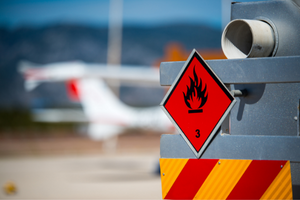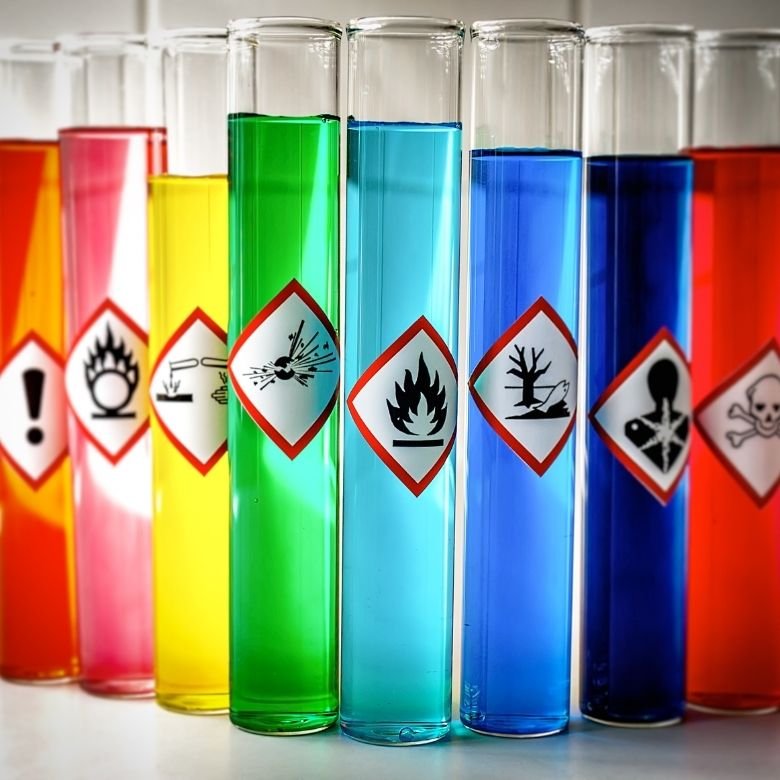Thousands of chemicals are used in commerce, transportation, and industry that can pose a threat to people and the environment. Proper labelling helps to make users aware of the risks and take appropriate measures. It is essential for creating a safe living and working environment.

The EU legal basis: the CLP Regulation
The labelling of hazardous chemicals only makes sense if it is universally understood and unified. To this end, efforts have been underway for years at the international level to create a universal warning and risk information system.
The most important initiative in this respect was the development of the Globally Harmonized System of Classification and Labelling (GHS) by the UN. It is already in place in over 60 countries around the world and was also adopted by the European Union in 2009. The previously existing labels for hazardous substances were replaced by new ones in the CLP Regulation which is now an EU-wide standard.
CLP stands for “Classification, Labelling and Packaging”. This regulation determines how chemical substances and their mixtures should be classified, labelled and packaged. The document contains, among other things, hazard classes and categories as well as guidelines for preparing product labels and placing them on the packaging of the chemical substance or mixture.
The CLP Regulation also regulates the use of alternative chemical names to protect intellectual property and the use of lists of substances on the market.

Classification of hazardous chemical substances
A key factor in the success of the GHS system is consistent categorisation. Thus, for the sake of clarity, three types of hazard classes have been created for chemicals and their mixtures. These are:
- physical hazards;
- health hazards;
- environmental hazards.
The labels of hazardous chemicals must clearly indicate the hazard class. In the first of the above-mentioned categories, these may include, for example, explosives, flammable gases, self-reactive substances and mixtures, or substances that cause corrosion of metals.
In the health hazard category, among others, are defined acute toxicity, skin corrosion, eye irritation or germ cell mutagenicity. A separate risk class is also the carcinogenicity of products.
Furthermore, the CLP Regulation identifies chemicals that pose a risk to the aquatic environment and the ozone layer.
Principles of labelling
Under current regulations, it is the responsibility of the manufacturer, importer or distributor to label hazardous substances. A label informing about hazards must be created before a given product is put into circulation. This obligation applies to both GHS-classified substances and their mixtures.
The hazard label for hazardous chemical substances must, above all, be legible. The elements of the label should stand out clearly from the background and their size and spacing allow for easy reading of those elements.
The label should be drawn up in the official language of the country in which the product is to be marketed.
The CLP Regulation also specifies what information must be included on the label. In addition to the specialised wording relating to the hazards of the chemical, this includes the supplier’s data, an indication of the product quantity and supplementary information.

Hazardous substance labels – means of providing information
The Unified Hazard Classification System also specifies how information should be provided to users. These include:
- hazard pictograms, i.e. graphic warning signs;
- signal words, i.e. brief phrases describing the level of danger;
- hazard and precautionary statements.
Under the CLP/GHS system, nine pictograms have been created in the form of diamonds with a red border. Each has an easily interpretable symbol that enhances the readability of the label and draws the user’s attention. This is reinforced by an equally clear one-word phrase. Depending on the severity of the risk, this may be “danger” or “caution.”
Hazardous chemical labels also include two types of hazard and precautionary statements. The first of these (H-phrases), describes the nature and severity of the hazard and is abbreviated as a four-place code. For example, code H252 means: “substance self-heating in large quantities; may ignite.”
P-phrases indicate recommended precautions to reduce the risks associated with a product. Again, the regulations provide four-place codes that address prevention, response, storage and disposal of a hazardous chemical.
All of the aforementioned elements form a legally required label that optimally fulfils its warning function. This helps to reduce the frequency of accidents and natural disasters. It is in everyone’s interest to ensure that hazardous substances are properly labelled!
- https://europa.eu/youreurope/business/product-requirements/chemicals/classification-labelling-packaging/index_en.htm
- https://www.osha.gov/sites/default/files/publications/OSHA3636.pdf